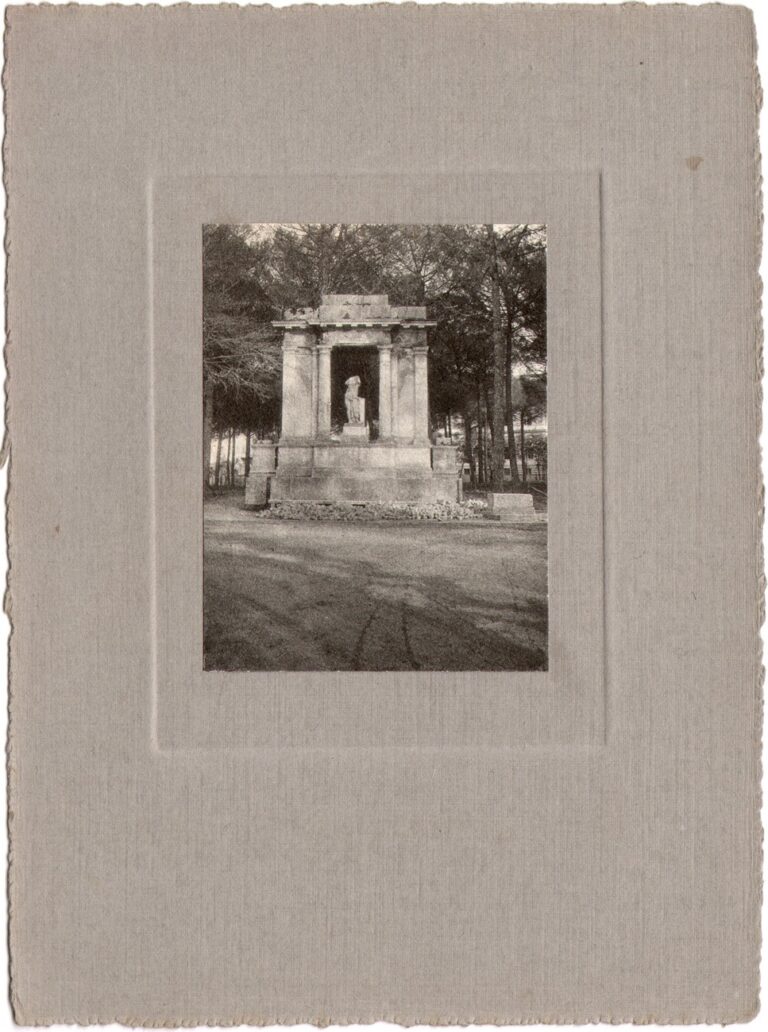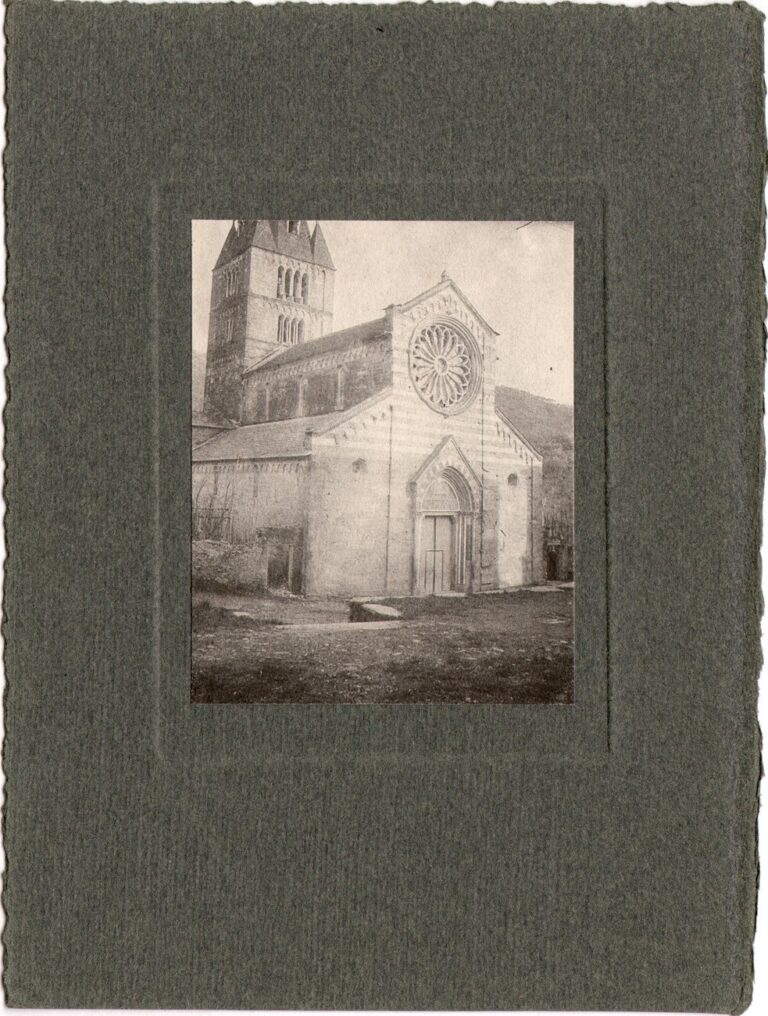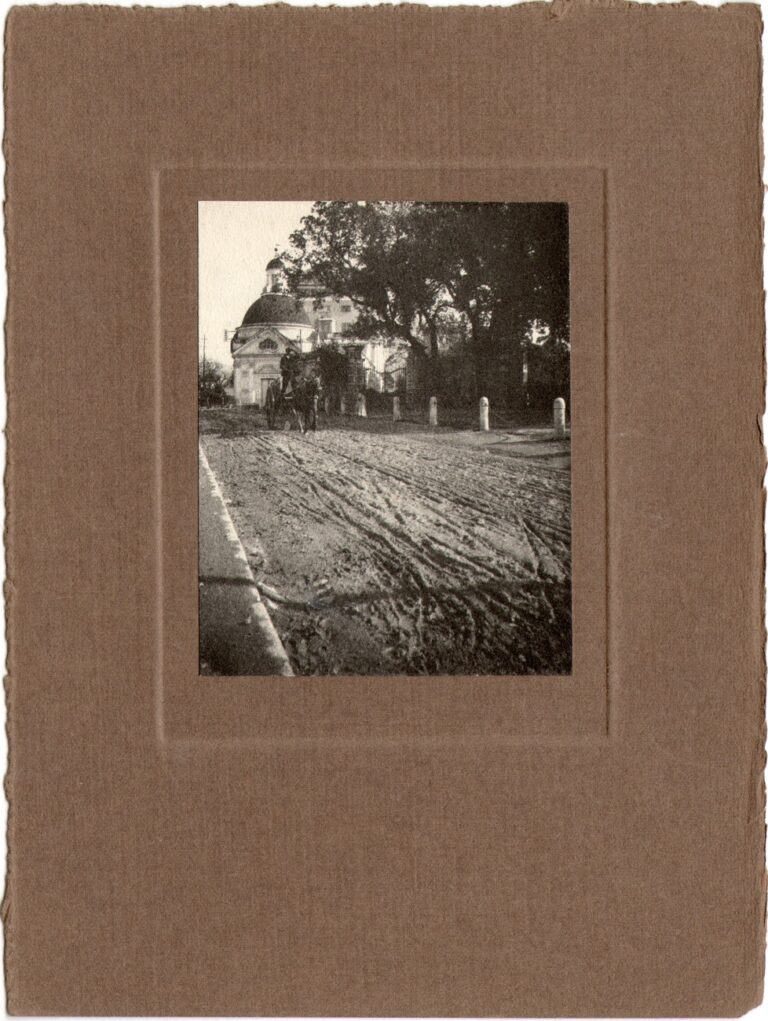
The Riven Sky
The Riven Sky is first known to have been presented as an exhibition carbon photograph by English photographer Fred Judge during the Fifty-seventh Annual Exhibition of the Royal Photographic Society of Great Britain in 1912. Commenting on process, The British Journal of Photography for their issue of December 6 that year said of the work and one other:
“Bromoil workers who suffer from woolliness in clouds should look at the firmness of texture in Fred Judge’s “The Riven Sky ” (41), which is a carbon print with a very beautiful cloud effect. He gives also a magnificent and natural effect of light through smoke in “Auld Reekie” (48).” (p. 690)
Probably in 1913, based on a numbering system compiled by the Judges’ Postcards Study Group Newsletter of September 2005, the work was assigned as #1076 and became a best-selling postcard for many years, with the evidence in the modern era of many examples still affordably obtainable in the online marketplace.
Although English photographer Fred Judge is best known for the many thousands of English views produced as postcards for his namesake commercial firm Judges Ltd., as an exhibitor in the annual Salons held by the Royal Photographic Society, he actively embraced and worked in a variety of mediums. Credited in 1909 with having invented the popular bromoil transfer process, he was a participant in the Royal Salons’ from 1900-15. The following is the known list in mediums he exhibited in:
1900: Bromide; 1901: Carbon; 1909: Gum bichromate; 1912: Carbon- (The Riven Sky) & gum on platinum; 1913: platinum; 1914: Bromoil transfer & Pastelgravure- described in Photograms of the Year 1914 thus: “Both M. Demachy in his original work and Mr. Judge in his own productions have adopted a method of colouring the oil transfers by means of the local application of coloured crayon, and in some cases the results have been delightfully dainty and effective. For this final development Mr. Judge has suggested the word “pastelgravure.” 1915: Bromoil transfer & Bromoil transfer from three & four colour negatives, the same year he became a FRPS.
The medium of true, hand-pulled photogravure was also a process Judge was adept in, as stated (see link) in a 1979 article by Harold White and a collection of ten examples ca. 1914-19 held by the Metropolitan Museum of Art in New York, in addition to this example of The Riven Sky.
The Postcard Man from Hastings: Fred Judge: 1872-1950
In his article “The Postcard Man from Hastings”, the author and honorable FRPS Harold White gives us an overview of Judge’s work, along with a selection of photographs, for the May/June issue of The Photographic Journal in 1979, describing Judge: “…his pictures tell forcibly of the versatility and artistry of his photographic work, placing him in the forefront of the many notable photographers of the early twentieth century.”
The Sussexpostcard.info online resource consulted in July, 2018 provides further early background on the photographer:
“From an early age, Fred Judge had been fascinated by photography, and, following a holiday in Sussex, he decided in 1902 to abandon both engineering and his native Yorkshire to become a professional photographer at Hastings. He purchased an existing photographic business belonging to a Mr A. Brooker at 21a Wellington Place in Hastings, renaming it Judges’ Photo Stores. His brother, Thomas Winn Judge, soon joined him as a business partner. Initially, he concentrated on selling photographic materials, producing prints of local views and acting as a lanternist at public lectures. He also hired out his “electrically lighted darkrooms”. In 1903, however, he began issuing picture postcards. It is generally thought that the very first card was a multi-view of the great storm at Hastings in September 1903. Many other cards followed in 1904 including general views of the town and studies of flowers and animals. Fred Judge set himself such high standards of creative composition and quality of finish that passers-by regularly gathered outside the Photo Stores to admire the latest window displays. In the first few years he sold cards at 1d (0.42p) each or 13 for a shilling, but by 1907 the price had doubled.”
Historical context of Judge as a significant pictorial photographer overshadowed by his commercial postcard business is rightly corrected in a fine post by John Toohey for his blog One Man’s Treasure in 2014 he titles INVOCATION TO THE EARTH.
Print notes, recto: titled in graphite within left corner border: The Riven Sky; signed in graphite within right corner border: Fred Judge
Provenance: Acquired in June, 2018 by this archive from English dealer who stated it had been purchased in 1996 from an antique shop in Greenwich, in southeast London, England.



